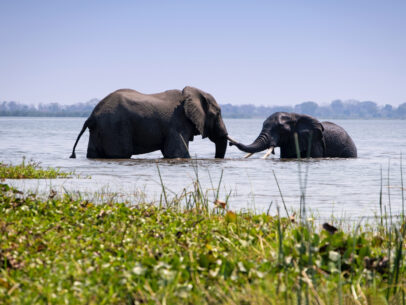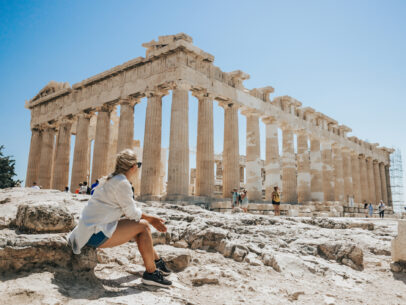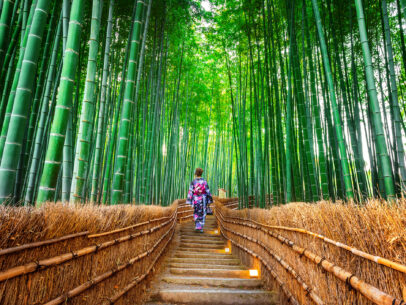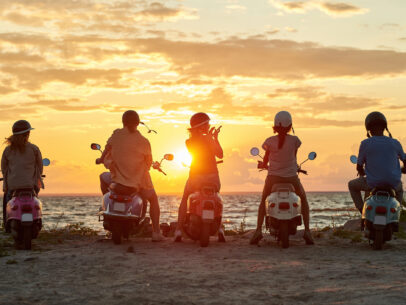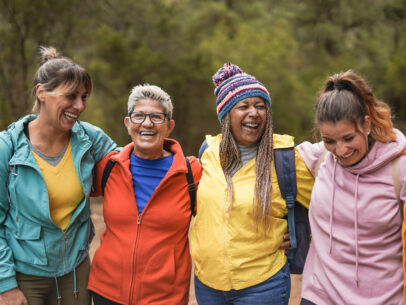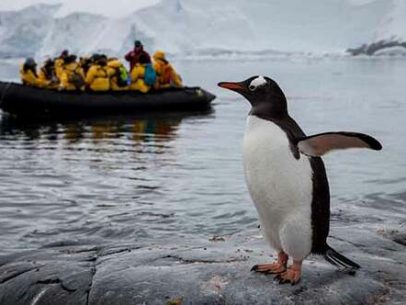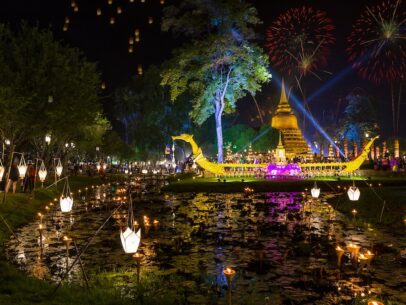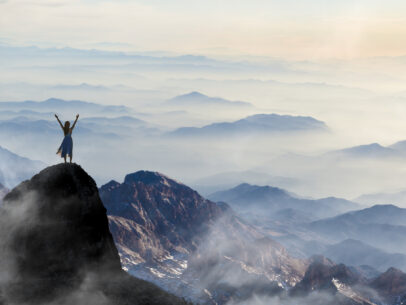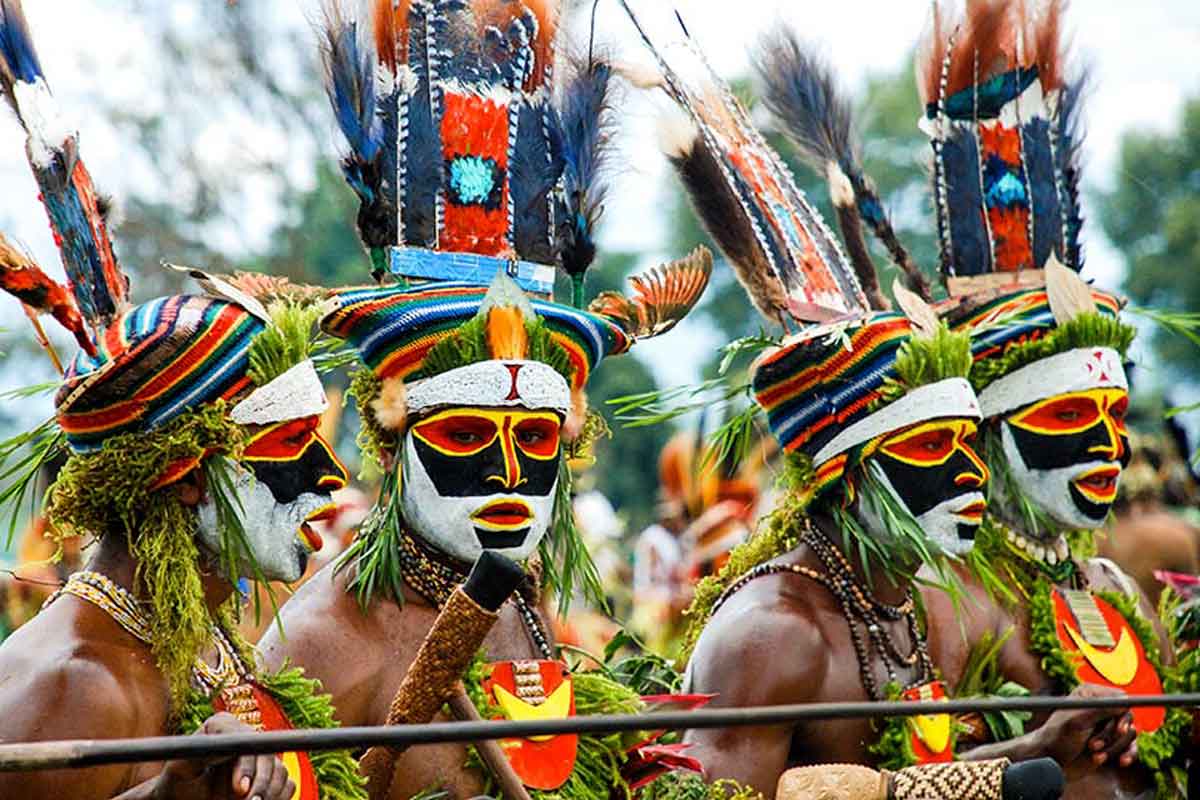
The Bird’s Word Blog
Travel to Papua New Guinea: Tribal Dances, Goroka Show, Friendly People

This post originally appeared on HI Travel Tales, a travel blog for people interested in adventurous, insider, curious, peek-around-the-corners travel.
Papua New Guinea festivals, culture, tribal life, and exotic remoteness make it a destination that will last with you forever. Journeys traveler Gary McPhee visited Papua New Guinea for the Goroka Show. Here, he shares his stories.
There were a great many unknowns leading into our 14-day Papua New Guinea adventure with Journeys International. Safety in Port Moresby was a concern as was hygiene, malaria, the quality of food and drink, and transport reliability. Although there were a few minor glitches, everything went to plan and it was easy to enjoy the friendly people in Papua New Guinea, a seldom-visited part of the world.
Mt. Hagen is the capital city of the Western Highlands Province and we had no issues arriving here on our Air Nuigini flight. We were met by our guide who loaded us into the van in front of a crowd of onlookers pressed up against the wire mesh fence. The sprawling dusty streets of Mt. Hagen were flanked by makeshift shops set up on blankets. Fresh produce was on display as were trays of betel nuts and cigarettes.
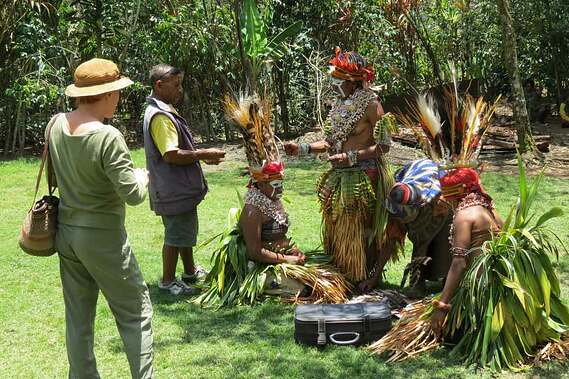
We drove 30 minutes along the Highlands Highway to an unnamed village known only as the Orchids Village. As this was our first village visit, we were a little unsure as to what to expect. We were seated on logs in a grassy clearing and then out of the bushes came several members of the Chimbu tribe, or the skeleton people, who performed a fascinating spirit dance. While frightening in appearance these men could not have been any friendlier and posed happily for pictures at the end of their performance. We were to learn that these tribal dances, put on for us in nearly every village, were a way of maintaining tribal culture and traditions.
It’s a lot of work to say hello to that many people!
Twenty minutes away was Tokua Village, our second stop for the morning. There, we were welcomed by a bow-wielding chief on the path who proudly showed us his house and village. In a hut was a spirit man who mysteriously mumbled while dropping things into the fire, and then we experienced our first (of many) fire lighting demonstrations and a men’s dance.
Venturing back through town we stopped at the very large market. There, we took a 20-minute wander through various aisles of fresh produce, cleverly arranged and bundled, and greeted the enthusiastic vendors who all wanted their photograph taken. It was indeed tiring work saying hello to so many people!
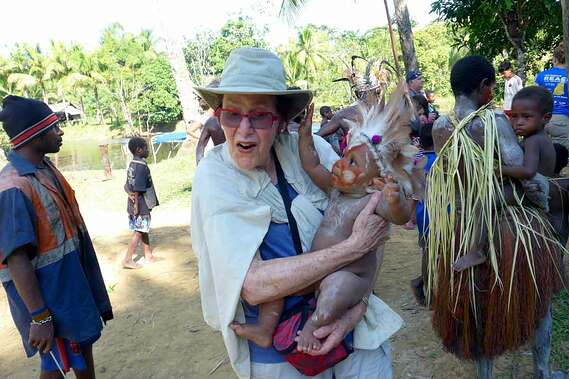
After a night in the area, we took a charter flight from Mount Hagen airport to the Karawari airstrip, deep in the jungles surrounding the Sepik River system.
Greeted here by our guide “Joe,” we immediately got into the boat and headed downstream along the Karawari River.
Brains of the Enemy a Delicacy – Glad They Like Us
Next up was a visit to the Majamai Village, which was about 30 minutes downstream. They put on a display with a war canoe and the tribe dressed in elaborate grass outfits to perform its War Victory dance. A village elder told me that they used to eat their enemies: The brain was a delicacy, and they made soup from the penises. Glad we weren’t staying for dinner….
Another day dawned with a beautiful sunrise, and we headed downstream to the junction with the Korasameri River. We visited the village of Mumeri, quite a large settlement near the mouth of the Black River. This was our guide, Joe’s, village and his family was glad to see him. The women gave a demonstration of handicrafts and weaving while the men welcomed us with the flute dance. That afternoon we headed towards the beautiful Mindimbit Village. The highlight here was the display given by the local carvers as they crafted a mask out of a raw piece of tree trunk. A captive sea eagle was also on display and as always the children were keen to interact with the tourists. Joe showed us the village Orator’s chair where local disputes are settled, but sadly for us, all in the village were happy this day.
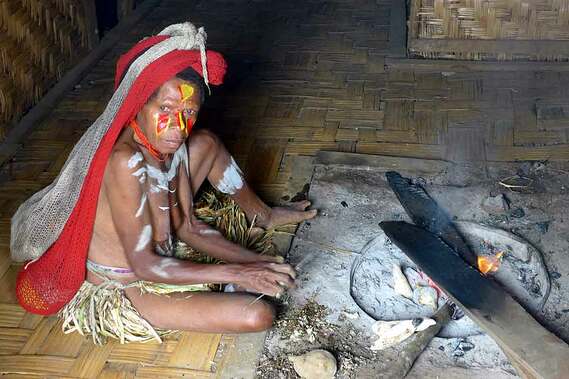
Another morning visit was to the Yimas fishing village, which had a picturesque setting at the mouth of a small tributary. As always the locals were friendly but there was no welcome dance here, just another market full of well-carved Sepik art. That afternoon we visited a family who put on a display showing how the sago palm is used, not only as a food staple, but also as a building material, clothing and fuel.
Eastern Highlands in Papua New Guinea for Bird-Watching
Our group then headed off via plane to the Eastern Highlands. Visibility wasn’t great as the cloud cover built up over the mountains so our pilot, George, had to circle a few times looking for an opening to the Ambua airstrip.
A clear morning allowed us to scan the Highlands Highway in search of the elusive Bird Of Paradise. Good scouting by our guide Thomas allowed us some glimpses of a King Of Saxony Bird of Paradise after a muddy trek through the undergrowth. Then came one of the highlights of the tour: the Huli men’s victory dance. Brightly painted and elaborately decorated the men danced, drummed and chanted in unison around the small clearing within the village. Their make-up was elaborate, wigs made from their own hair were threaded with brightly colored feathers and their faces were a bright yellow (ambua) from the local clay. Plenty of red embellishments, plus necklaces, beads and cassowary plumes all added to the glamour. They were only too pleased to pose for photographs at the end of their performance — even the chief who appeared a bit surly earlier on. The Huli pride themselves in the wigs that they make from their own hair so a visit to the Huli wig school proved fascinating. The chief wig maker was sort of a witch doctor and he strutted about like he owned the place. He probably did because the others had to pay him so that they could grow their own wigs!
For their money they were given advice on how to care for their hair while the 12-month process unfolded. Special water-drinking rituals and sprinkling ceremonies apparently helped the wig develop. Some of the “students” were growing their third wig, which they would sell for some useful pocket money. Most Huli men have their own wig (either self grown or purchased), which they use in all tribal ceremonies.
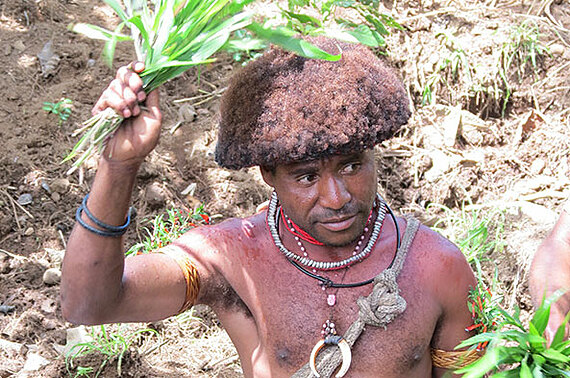
The Huli women’s village is set on the hillside just below Ambua Lodge with wonderful views of the valley. Here they work in the fields growing vegetables and tending the pigs. The unmarried women advertise their availability through use of the yellow face paint while the widows present ghost-like figures with their whitened faces and simple woven skirts. A visit to the Huli men’s village was the last of our Huli experiences. There was the customary fire lighting, the bow and arrow display, and the pet tree kangaroo, but the highlight here was the demonstration of the mumu. The earthen oven had been started earlier that day and for the culmination of our visit they began to dig up the vegetables, protectively wrapped in pandana leaves and shared with us some tasty cabbage, pumpkin and sweet potato.
Papua New Guinea’s Famed Goroka Show – A Sensory Assault
Now we were off to what could really be the highlight of the trip – the Goroka Festival, an annual September event for which Journeys has one tour each year. After so many great experiences, we wondered if the Goroka Show could offer much more. Indeed, it certainly delivered. What an experience!
With growing excitement we joined the massive crowd heading to the showgrounds, many of whom had already put on their amazing tribal costumes. A VIP pass allowed us easy and quick access, and soon we were mingling with the tribal groups as they sang and danced, each staking out their own little corner of the open field. The early arrivals picked the best positions, those closest to the grandstand or near to the shade. Everyone was so friendly, most were very keen to pose for pictures.
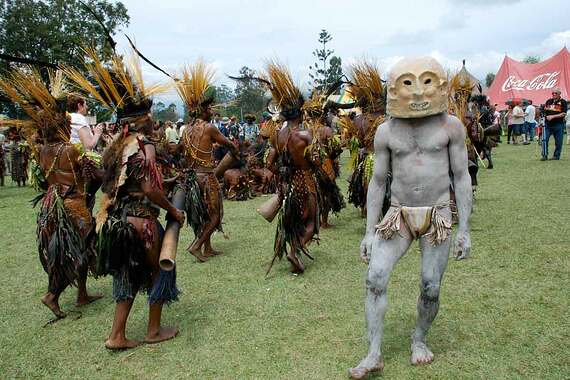
This was quite an assault on the senses. Color, movement and sound in every direction. Elaborate headdresses, intricate beading, colorful face paint and Bird Of Paradise feathers everywhere. Chiefs and elders marshaled their groups many of which had traveled for days from remote locations to participate in this Independence Day festival.
Natives Throng to the Goroka Show
Our experience the next day, Sunday, mirrored Saturday. Back to the show grounds with more than 100 tribal groups. Would it be a bit boring on the second day? Our concerns were quickly allayed as we again immersed ourselves into the experience. Friendly happy people had meticulously reapplied their make up and continued to provide an impressive display. The spectacle was different in each direction.
The numbers of people in the city of Goroka swell considerably during the festival. There were estimated to be up to 50,000 people in town for the weekend so booking early is essential. Many impromptu food and craft stalls sprung up at the side of the road. Many people were intrigued by our group of visitors and most wanted to say hello and shake our hand — and then of course sell you a carving, bilum bag or necklace!
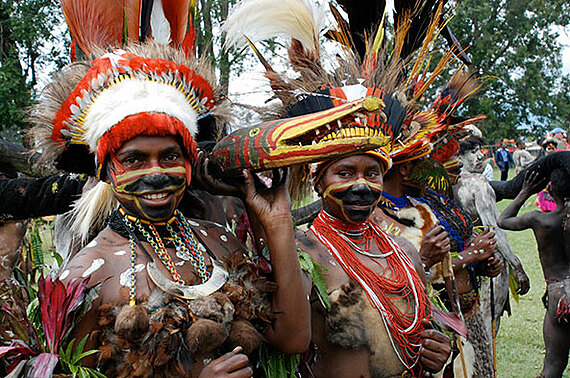
Our final morning we headed to Asaro, home of the famed mudmen. The village was set just off the Highlands Highway and featured some great mountain views and well-kept gardens full of fresh produce. Our group assembled in a clearing and after some preparation, the mudmen eerily emerged from the bushes and slowly began to approach us. It was easy to see how their enemies would have been terrified. They happily posed for photos are allowed us to try on one of the incredibly heavy “mud heads”. Pretty claustrophobic and hot — no wonder they don’t keep them on for long!
Papua New Guinea — An Intriguing Land Worth a Visit
Our last night was a little anticlimactic. Perhaps it was fatigue, perhaps it was the realization that our amazing adventure was over, and perhaps it was the expectation that we could actually order pizza. Tomorrow we would head in all directions but we would all share wonderful memories of this undeveloped but beautiful land, and these would last a lifetime.
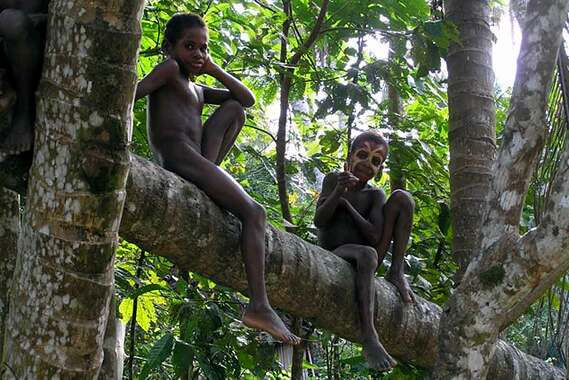
Travel to Papua New Guinea to see this intriguing land where time seems to have stood still. Village life has remained a constant for centuries and each group has clung to its own customs, language and dress and remain fiercely proud yet extremely welcoming.
About the Author, HI Travel Tales
Two lifetimes of globetrotting across several continents and dozens of countries fueled the love of people, places and cultural explorations for travel journalists Therese Iknoian and Michael Hodgson. Their blog, HI Travel Tales, was launched in 2014 to share their experiences and discoveries, not only as a married couple but also as solo travelers. They love collaborating with other travelers to communicate their stories, too, and have a growing slate of contributors, including many now from the Journeys International family.
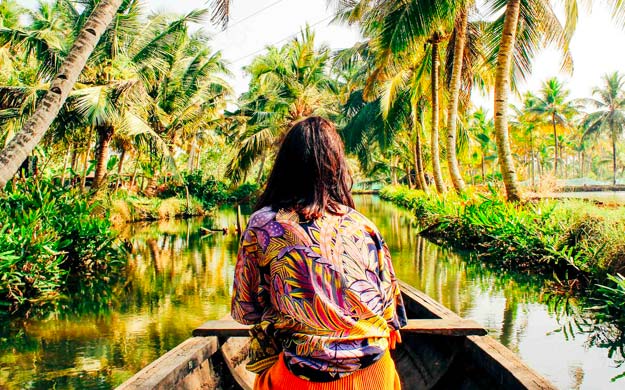
Design an adventure with Journeys International!
With over 40 years of experience, we create experiences that match your goals.
Start Planning